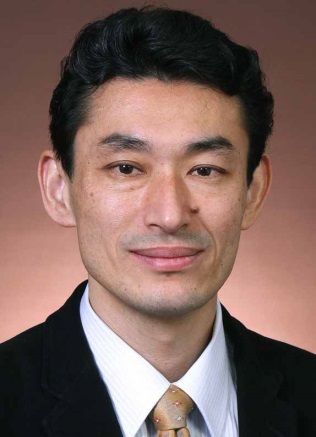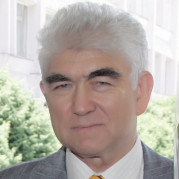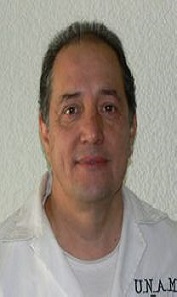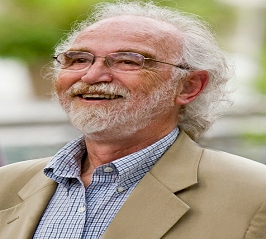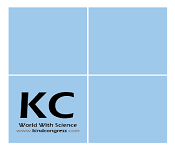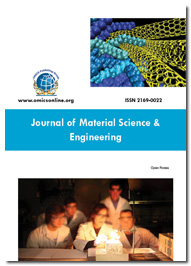Theme: New Horizons in Electrochemistry
Materials Electrochemistry 2019
ME Conferences organizes various scientific events and programme, along with eminent people having distinguishable expertise from across the world, to speculate about the current trends and future development of technologies.
We cordially invite the scientific community with research interests towards “Materials Electrochemistry Conference: Advancements and Breakthroughs” organized with the theme of “New Horizons in Electrochemistry” on September 20-21, 2018 at Dubai, UAE.
Some of the Research highlights to be discussed in the conference are interdisciplinary concepts .This captivates the attention of a broad spectrum of cohorts ranging from revered scientists to budding young professionals.
Why to Attend?
Electrochemistry is a branch used to study the electrochemical properties of molecules and to explore the chemical reactions involving electron transfer, the kinetic measurement of parameters and to establish the reaction mechanism for the electro-synthesis of desired product. Materials Electrochemistry 2018 is structured in a manner so as to bring out the recent research topics and interests among the scientific community to the forum by distinguished speakers. The conference gives a platform where Science can meet Technology as a result of the presence of revered personalities from the academic and industrial field.
Why Dubai, UAE?
Dubai, one of the seven emirates of the UAE is the most populous city. Owing to its attractions, the city has made its way to the must-go destination of most of the people on the face of the Earth. From hitting the Desert sands at the Wild Desert Safari to the World Trade Centre and the sky-piercing Skyscrapers; it has many adventures on-board. Also the research groups involved in the problem-solving of the challenges related to the Water Desalination, Corrosion Protective Coatings, and next generation Energy Storage Technology have their application hoarded at the Second largest Oil Reserve, Dubai.
Target Audience:
Materials Scientists
Electrochemical Engineers
Research oriented people
Academic Professionals
Scientific community
Research scholars
Inquisitive Students
Industrialist
Research Associates
Young professionals
Track 1: Molecular Electrochemistry
Molecular Electrochemistry analyses the flow of current in a molecule which helps in the probing of molecular properties. An alternate electron transfer mechanism has enabled some of the electro Active molecules to exhibit Electrochemiluminescence which can be further used as molecular catalyst and sensors. Molecular electrochemistry also gives a deep insight in the electron transfer mechanism at the electrode surface, the electro polymerization reaction for the formation of conductive polymers and the electro synthesis of molecules and the methods for mass transport control in ultra-microelectrodes involving multiple electron transfer mechanism. This also serves as a tool for the development of efficient devices and sensors once the underlying principles and mechanisms are understood. Dealing electrochemistry at the molecular level has accelerated the research focus towards the development of new characterization techniques including Spectrometry, Voltammetry, and Scanning Molecular Probes which can be used for scanning, imaging and self-assembly. The molecular Nano-electrochemistry principles applied for nanoparticles for self-assembling, pattern formation widens its scope in the field of Nano science
- ElectroChemiluminescence
- Molecular Catalysis
- Ultra Microelectrode
- Molecular Electronics
- Electron Transfer Mechanism
Track 2: Energy, Materials and Electrochemistry
The revolutionary field of utilizing conventional energy resources requires efficient Energy conversion and storage system. In the light of which various high energy density materials have been developed. The energy storage and conversion system has turned over a new page in its development by adopting evolving design and manufacturing techniques of new materials. The design, synthesis, self-assembly and functionalization of carbon based nanomaterial like graphene, fullerene, CNT show promising energy storage capacities .These high energy density materials can easily replace the Pt catalyst which is economically costly and become unstable in the long run, this in turn reduces the fuel cell cost. The next generation materials with self- healing capability, Energy and power density, rate capability, and cycling life of batteries, fuel cells, and supercapacitors can be engineered by altering the structure, composition, morphology, and architecture of the electrode and electrolyte materials. However, quantifying and controlling the processing-structure-property relationships for these materials is extremely challenging.
- Dielectric Materials
- Electro Chemical Catalysts
- Bipolar Electrochemistry
- Electro Hydro Metallurgy
- Electrode Materials
- Electro Catalysis
- Thin Films
- Microelectrode
Track 3: Nano Electrochemistry
Nanoelectrochemistry by applying its interdisciplinary in various field like electronics, biology, energy can conceive new devices that can serve as sensors, actuators, Nano electronics, exploring its optical, magnetic and electronic properties. In addition to this they are used in energy storage sytems as the nanocomposite are seen to be of high power density. The electrical behaviour of evenly colloidal nanoparticles in an homogenous solution depends on the surface charges, the presence of ions, surfactants at the Nano-interface studied broadly as Colloidal Chemistry. Nanotechnology offers various host systems for the delivery of drug molecule at the target sites which are electro-spun by the application of high electric potential. The fusion of nanotechnology and electrochemical technology has given birth to the Electrochemical Scanning Tunnelling Microscope.
- Supramolecular Systems
- Nano Catalysis
- Nano electrode
- Electrochemical Nano fluidic devices.
- Nano-Interface Electrochemistry
- Graphite based electrodes
Track 4: Forthcoming Electrochemical Energy Systems
The digital industry which is booming in terms of marketing figures has the urge of finding new alternative energy storage system with low product development cost in order to meet the growing demands for Energy Management. This can be achieved by introducing next generation materials synthesized based on modern techniques. Merging the Photo-chemical properties and electrochemistry, the high efficiency of photo voltaic cells and devices is captivating the attention of researchers from all over the world. In addition to that new Energy Storage System models are being designed Storage Technology like Grid Storage Technology and integrated Energy Generation and storage technology with advancements like Rechargeable lithium ion batteries, flow battery. A whooping $19.04 billion is the predicted market value of the Energy Storage System at a CAGR of 8.38% by 2022. Other Energy Storage Technology for the times of peak demand include Compressed Air Energy Storage, Fly Wheel Systems and Pumped Hydro Power Systems. Safety measures and regulations must be given out for the prevention of fire breakouts at the Energy Storage Sites.
- Photo-voltaic cell
- Flow battery
- Microgrids and Nanogrids
- Rechargeable Batteries
- Smart Grid Technology
Track 5: Polymers Electrochemistry
The conductive property of Electro polymerized polymers upon oxidation is on the same scale as that of the metals. Adding more to its advantage is its flexibility and light-weight enlarging its application circle towards digital electronic systems like OLEDs, Opto-Electronic devices and Photo-chemical resists which can be used in Nanolithography. These polymers have found application as Supercapacitors, Light Emitting Diode, Solar cells, Field Effect Transistor, actuators and Bio-Sensors. The conducting polymers can be synthesized by Electrochemical method, Photochemical Method, Metathesis Method, Concentrated Emulsion Method, Inclusion Method, Solid State Method, Plasma Polymerization, Pyrolysis Method The performance value of the conducting polymers can be improved by incorporating nanomaterial like CNT in them. The incorporation of the type of nanoparticles varies according to the application of the polymer. Thus the polymers electrochemistry has marked its importance in microelectronics, Nano electronics, electro catalysis, fuel cell electrodes, and data storage and bio medical applications.
- Organic Electronics
- Metathesis Method
- High Performance Polymer electrolyte
- Photochemical Resists
- Flexible Electronics
- Opto-electronic devices
- Polymer Nanotechnology
Track 6: Environmental Electrochemistry
In order to tackle the challenges faced by the environment in terms of landfill dumping with e-waste, Electrochemistry can play a vital role in recycling the batteries for the Environmental Remediation, and has a wider scope in the water treatment industry where the Electro Dialysis, Electroperoxidation, Electrocoagulation method can be employed for the treatment of waste effluent water. Electrochemical Sensors for the detection of pollutants in water bodies are developed for the treatment of organic and inorganic complexes in it. The Electrochemical cells for the generation of H2O2 and the dissociation of organic molecules present by photolysis of the molecule.
- Electro-Fenton Process
- Electrochemical Water Disinfection
- Electrochemical recycling
- Environmental Remediation
- Electro Dialysis
- Photolysis
Track 7: Bio-Electrochemistry
Electrochemical principles applied to the Biological field have opened new avenues for modern energy generation systems where biological molecules and organism are being used as the source of energy generation in fuel cells. Electroporation techniques are applied for the transfer of gene and drug molecules. Enzymatic Electrochemistry has found its application as a sensor, bio-fuel cell, bio-modified electrodes and catalysis. The quantification of electrical characteristics of the nervous system has much to be explored which can be done by applying electrochemical principles This field can also help in the quantification and diagnosis of Biological Analytes like DNA and enzymes. The magnetic nanoparticle tagged along with the bio-markers can serve as electro-optical device.
- Enzyme Electrochemistry
- Enzyme Electro Catalysis
- Microbial Electrochemical cells
- Interfacial Bioelectrochemistry
- Bio Neuroanalysis
- Enzymatic Fuel Cell
Track 8: Theoretical and Computational Electrochemistry
This division of Electrochemistry employs theoretical and computational models to predict the electrochemical system behaviour and redesign the energy storage devices. The development of instrumental techniques necessitates the need for Computational tools for the data analysis. Too many options available for the choice of electrode, electrolyte and membrane separation materials makes it difficult to decide on the combination of the materials to be used while device fabrication. The density functional theory and molecular dynamics models are the simulation models used at nanoscale, while the finite element modelling can be used at a larger scale. First-principles computational methods can be used to study the energy landscape for intercalation and diffusion barriers of materials and thus provide new insights regarding ion transport phenomena, and explain electrochemical characteristics for the design of electrodes. The simulation models for the proton and electron transfer across the membrane in an electrochemical cell are Helmholtz model, Gouy-Chapman-Stern model, Helmholtz model, Tafel diagrams. The development of theoretical models and tools to account for the studies of coupling between charge transport and reactivity in porous films deposited on electrode surfaces.
- Models of the electrochemical interphase
- Atomistic Models
- MesoScale models
- Macroscopic Models
- Molecular Dynamics Simulations of Ion Intercalation in Lithium Batteries
- Modelling of Light Matter Interactions in Nano Electrochemistry
Track 9: Corrosion and Surface Science in Electrochemistry
According to a Global Industry Analysis the Corrosion Protective Coating Industry is expected to generate revenue of $19.5 billion by the end of 2022 only in the Asian countries. Electrochemistry serves as both the cause and solution for Corrosion. Ultrasonic testing, scanning electron microscope (SEM), Electrochemical Impedance Spectroscopy (EIS), X-ray photoelectron spectroscopy (XPS),and Scanning Kelvin Probe are the techniques used to characterize the corrosion surface. Electrochemistry playing a key role in this industry needs to expand its horizons for enforcement of solutions via Electrochemical Interface Interaction for the Corrosion Protective Surface Coating. The electrochemical corrosion protective coating involves organic conductive polymers, multi-layer coatings, surfactants, CNT reinforcements, Sacrificial Coatings, Anodization, and Sacrificial Anode Protection by the engineering of materials.
- Cathodic Protection, Passivation, corrosion inhibitors and metal plating
- Electro Chemical Mineral Leaching
- Electrochemical Interface Interaction
Track 10: Analytical Electrochemistry
Analytical Electrochemistry deals with the fundamentals of electrode reactions and electrochemical methods and the physical quantification of rate of the chemical reaction taking place in an electrochemical cell. A broad spectrum of advanced electrochemical analytical methods commands the requirement of knowledge of the underlying principles. Insights into these processes are developed before considering how the analytical techniques can be applied in the practical studies of electrochemical devices such as batteries, fuel cells, supercapacitors, and sensors.
- Capillary Electrophoresis
- Large-amplitude AC voltammetry
- Chemometrics
Track 11: Electro Chemical Sensors
The Electrochemical sensors are predicted to generate USD 8.35 billion by 2021 at a CAGR of 7.97% over the period 2016-2021.This average annual growth rate ensures a continuous growth and the resilient nature of the market. The Electrochemical Sensors has its application in a vast array of fields with Bio sensors, Corrosion Sensors, Solid-state Electrochemical Sensors, Thin Film sensors, Gas Sensors in house. They operate by taking the changes in the potential difference, ion conductivity at the sensor surface.
- DNA Hybridization Biosensors
- Immunosensors
- Ion selective electrodes for trace analysis
- Enzyme-Based Electrodes
- Enzyme Inhibition Biosensors
- Imprinted Polymer based Sensors
Track 12: Recent Advances in Electrochemistry
The past decade has seen a continuous development in terms of digital production. The field of electrochemistry witnessed the age of product development with modern electronics with features alike Electrochromism, Scanning Electrochemical Imaging, Potential Memory devices, Wearable Electro Chemical Sensors. As science develops the need for new characterization techniques also arises in the heed of which a number of instruments are developed like pulsed gradient spin echo (PGSE) NMR.
- SpectroElectrochemistry
- Micro Chip Devices
- Hybrid Electronics
- Ion-Selective Field Effect Transistors
- Electrochemical impedance spectroscopy (EIS)
Related Conferences: Materials Electrochemistry Conferences | Materials Science Events | Materials Engineering Meetings | Nano Technology Conference | Nano Science Conferences | Nano materials Congress
- 9th Annual Congress and Expo on Biofuels and Bioenergy April16-17, 2018 Dubai, UAE.
- International Conference on Materials and Polymer Chemistry July 05-06, 2018 Bangkok, Thailand.
- 20th International Conference on Advanced Materials Science & Nano Technology August 27-29, 2018 Dubai, UAE.
- 10th International Conference on Mass Spectrometry and Chromatography October 8-9, 2018 Dubai, UAE.
- 6th Asia Pacific Congress on Chemical and Biochemical Engineering September 17-18, 2018 Hong Kong.
- 18th International Conference and Exhibition on Materials Science and Engineering May 28-30, 2018 Osaka, Japan.
- International Conference on Advanced Materials and Simulation September 11-12, 2018 London, UK.
- 15th International Conference and Exhibition on Materials Science and Engineering November 07-08, 2018 Atlanta, USA.
- 23rd World Congress on Structural Materials and Engineering November 12-13, 2018 Melbourne, Australia.
- 18th International Meeting on Chemical Sensors May 10-15, 2020, Montreal, Canada.
- Electrohydrodynamics and Electrodiffusion in Material Sciences and Biology March 12-16, 2018 Minneapolis, United States.
- Faraday Discussion - Electrochemistry at Nano-interfaces June 26-28, 2018 Bath, UK.
- Conference on Electrochemistry in Advanced Materials, Corrosion and Radiopharmaceuticals February 15-17, 2018 India.
- 7th Baltic Electrochemistry Conference: Finding New Inspiration November 4-7, 2018 Tartu, Estonia.
- 20th International Conference on Electrochemistry and Industrial Electrolysis March 26-27, 2018 Madrid, Spain.
- European Chemistry Conference July 04-06, 2018 Rome, Italy.
- Conference on Advances in Catalysis for Energy and Environment January 10-12, 2018 TIFR, Mumbai.
- Electrochemical Methods in Corrosion Research July 22-27, 2018 Cambridge, UK.
- 4th International Conference on Electrochemistry June 11-12, 2018 Rome, Italy.
- CEC Annual Workshop on Electrochemistry February 10-11, 2018 Austin.
Related Societies:
USA: Society of Electroanalytical Chemistry, The Electrochemical Society, American Chemical Society, National Academy of Sciences, Institute of Chemists, USA, International Coating Science and Technology (ICST), Society for Applied Spectroscopy, American Institute of Chemists, USA, The Electrochemical society, USA.
Europe: The International Society of Electrochemistry, Electrochemical Division of The Italian Chemical Society , Swedish Chemical Society, Slovenian Chemical Society, Society for Applied Spectroscopy , National Institute of Chemistry Singapore , Polish Chemical Society, Netherlands Chemical Society, National Research Council, Royal Irish Academy, German Chemical Society, French Research Council , Association of Finnish, European Association for Chemical and Molecular Sciences , Egyptian Chemical Society (ECS), Danish Chemical Society, European federation of Corrosion, Europe, Royal Society of Chemistry, Chemsoc, the RSC's Chemistry Societies’ Network, Society of Chemical Industry, Royal Society of Chemistry.
Asia-Pacific & Middle-East: Chinese Society of Electrochemistry, China , Electrochemical Society of Japan, CSIR-Central Electrochemical Research Institute , Electrochemical Society of India, The Electrochemical Society of Japan , National Science Foundation Electrochemical Technology Group Institute of Chemistry Ceylon , Saudi Chemical Society, Russia Academy of Sciences, Integrated Chemists of Philippines, Chemical Society of Peru, Chemical Society of Pakistan, Norwegian Chemical Society, Kuwait Chemical Society, Science Council of Japan, Israel Chemical Society, Israel Academy of Sciences and Humanities, Indian Society of Electro Analytical Chemistry, Indian National Science Academy, Hong Kong Chemical Society, Malaysian Institute of Chemistry, Mauritius Chemical Society, Kenya Chemical Society.
Summary:
Electrochemical approaches offer specificity of detection combined with a method of transducing the signal into the electrical domain. Electrochemical sensors are expected to see the highest growth, with demand reflecting improvement in manufacturing. The growth of the Electrochemical Industry is expected to see a bloom in Asia-Pacific region followed by the Europe and North America. The widespread range of products offered by the Electrochemical Industries emphasizes the need for a leap in the development of these industries in the Asia-Pacific regions. Various research groups and Institutions spread across different countries are involved in the product development ranging from Biological applications to the Automobile industries and extending its arena over the Corrosion proof coating technologies. The Electrochemistry plays important role in giving insight on reactions involving the electron transfer mechanism. The Electrochemical methods like voltammetry also gives the information on the Transition state of the Organic molecules and the potential to be applied across the electrode to get the product in Electro synthesis reaction, this can be employed for the conversion of an organic molecule by reduction mechanism.
Importance and Scope:
Electrochemical sensors are anticipated to see the fastest growth, with demand reflecting recovery in manufacturing. Optical sensors will continue to benefit from their high sensitivity, stability, immunity to interference, and product improvements such as smaller size and enhanced ruggedness. Materials Electrochemistry-2018 will enlighten the path to set the new horizons for Electrochemistry in the assembly of renowned Scientists and the presence of eminent personalities to materialize the ideas and innovations of Researchers in association with the Industrialists.
The CAGR value which tells the average continuous annual growth of a company here ensures a continuous development of the market with a steady growth and resilient nature in its development. With the growing demand for energy worldwide, the market for energy storage has witnessed a boom in recent years. Devices that can store energy for using at a later time have developed rapidly to meet the rising requirement for energy. Companies and governments worldwide are facilitating the growth of energy storage devices owing to their capability of storing electricity more effectively and efficiently. The Germany Chemical Sensors market is expected to increase to $1.00 billion by 2018 at a CAGR of 8.54% over the period 2014-2020. The Germany Nano Sensors market is expected to increase to $140.41 Million by 2020 at a CAGR of 93.15% over the period 2014-2020.

The importance of Electrochemistry can be made from the number of research groups involved in its development worldwide in various aspects in different countries.
Also with the growing energy demand and renewable energy resources replacing conventional energy demands, the need for the design and development of energy storage and distribution systems have led to the innovation new modern equipment.

The funding to the leading research groups in the Electrochemical field giving an insight of their funding in the Electrochemical Research leading to various product development and reaching excellence in case of unveiling the potentials of the Electrochemical process to provide solutions for the challenges faced by the industries.

The leading Government Organizations which have felt the need for the research for the development of Energy Systems and to enhance the synthesis of coatings for Corrosion prone industries have funded several research groups .The graph depicts the various Government oragnizations involved in the Research funding for the Electrochemical Industry.
The global electrochemical instruments market is expected to reach $2,205.9 Million by 2019 from $1,713.0 Million in 2014, growing at a CAGR of 5.2% from 2014 to 2019. The market is dominated by Europe, followed by North America, Asia-Pacific, and the Rest of the World (RoW). Asia-Pacific region is expected to grow at the fastest rate during the forecast period. The growth of the Chemical Sensors Market is currently being hindered by decrease in automobile emissions testing due to the falling number of vehicles that need to be tested.
The number of Research labs being involved in the Electrochemical research in Molecular Electrochemistry, Corrosion Science, Nanoelectrochemistry, Polymer Electrochemistry, Bio-Electrochemistry, Electrochemical Sensors, Electrochemical Energy Systems(EES), Environmental Electrochemistry, Theoretical and Computational Electrochemistry are spread across the globe in various countries.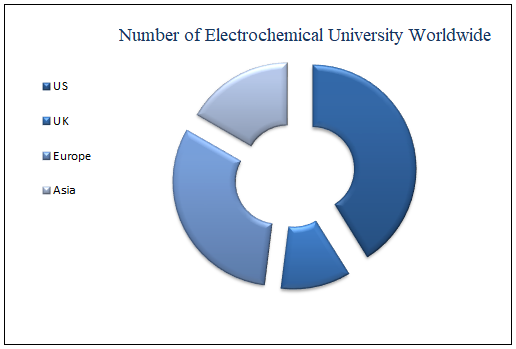
Major Research Groups involved in Electrochemical Research:
- HANNA Instruments, Inc. (U.S.)
- Metrohm AG (Switzerland), Xylem Inc. (U.S.)
- METTLER-TOLEDO International, Inc. (U.S.)
- DKK TOA Corporation (Japan), Danaher Corporation (U.S.)
- Endress+Hauser AG (Switzerland)
- Thermo Fisher Scientific, Inc. (U.S.)
- Yokogawa Electric Corporation (Japan)
- Horiba Ltd. (Japan)
- General Electric (U.S.)
- Honeywell International Inc. (U.S.)
- Teledyne Technologies Incorporated (U.S.)
- Siemens AG (Germany)
- Emerson Electric Company (U.S.)
- Emerson Electric Company(U.S.)
- General Electric(U.S.)
- Honeywell International Inc.(U.S.)
- Siemens AG(Germany)
- Teledyne Technologies Incorporated (U.S.)
- ABB Measurement & Analytics (Switzerland)
- Analytical Technology (USA)
- Broadley-James (USA)
- CONSORT (Belgium)
- DKK-TOA (Japan)
- DKK-TOA (Japan)
- Etatron D.S. (Italy)
- GF Piping Systems (Japan)
- GHM Messtechnik GmbH (Germany)
- GOnDO Electronic (China Taiwan)
- Hamilton Bonaduz (Switzerland)
- JUMO (Germany)
- Knick (Germany)
- Kuntze Instruments GmbH (Germany)
- LTH Electronics Ltd (UK)
- Metrohm (Switzerland)
- Riels Instruments (Italy)
- ProMinent GmbH (Germany)
- Pico Technology (UK)
Conference Highlights
- Molecular Electrochemistry
- Energy, Materials and Electrochemistry
- Polymers Electrochemistry
- Forthcoming Electrochemical Energy Systems
- Nano Electrochemistry
- Environmental Electrochemistry
- Bio-Electrochemistry
- Theoretical and Computational Electrochemistry
- Corrosion and Surface Science in Electrochemistry
- Analytical Electrochemistry
- Electro Chemical Sensors
- Recent Advances in Electrochemistry
To share your views and research, please click here to register for the Conference.
To Collaborate Scientific Professionals around the World
| Conference Date | September 23-24, 2019 | ||
| Sponsors & Exhibitors |
|
||
| Speaker Opportunity Closed | |||
| Poster Opportunity Closed | Click Here to View | ||
Useful Links
Special Issues
All accepted abstracts will be published in respective Our International Journals.
- Journal of Material Sciences & Engineering
- Journal of Advanced Chemical Engineering
- Journal of Chemical Engineering & Process Technology
Abstracts will be provided with Digital Object Identifier by






















